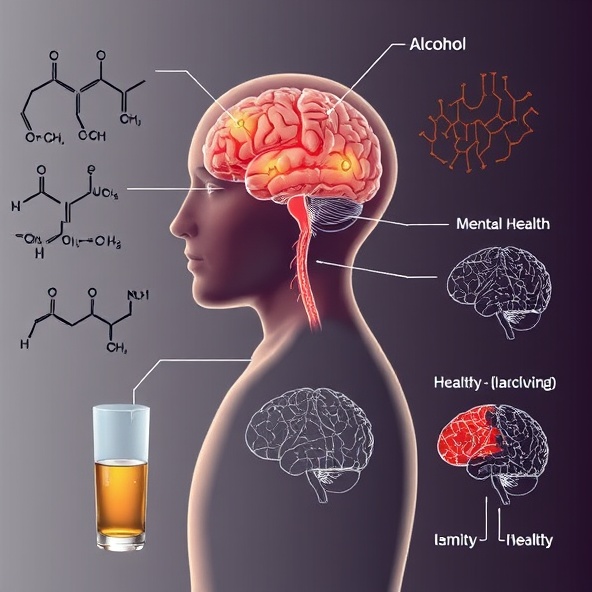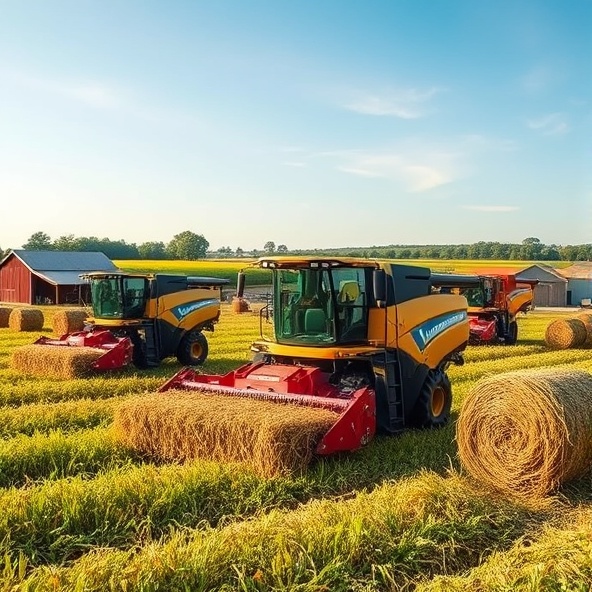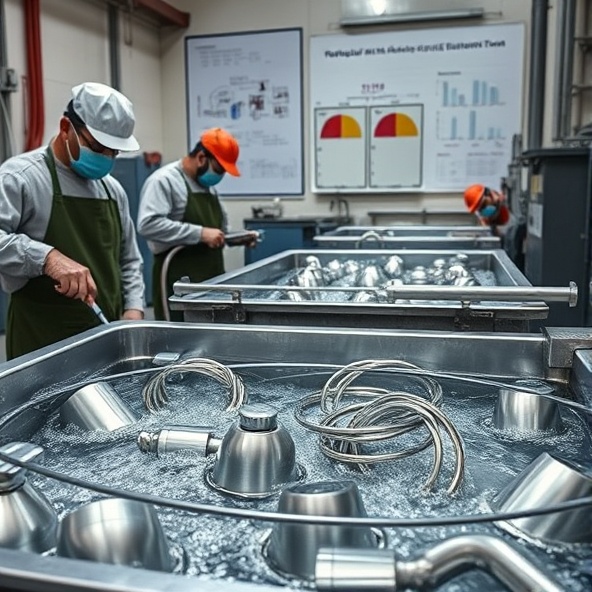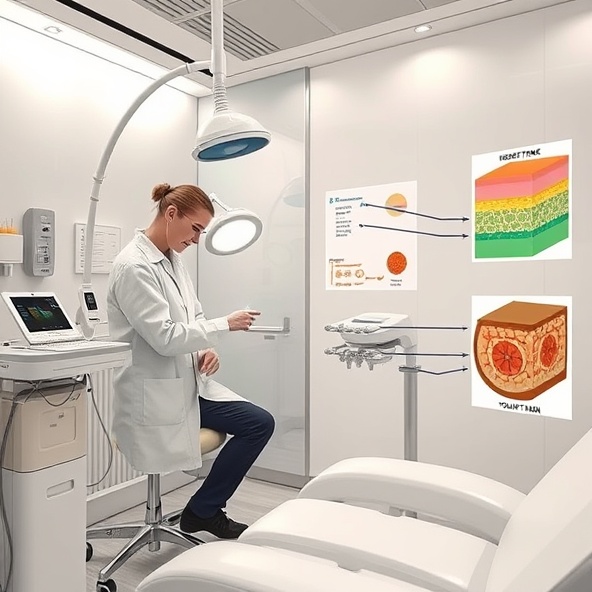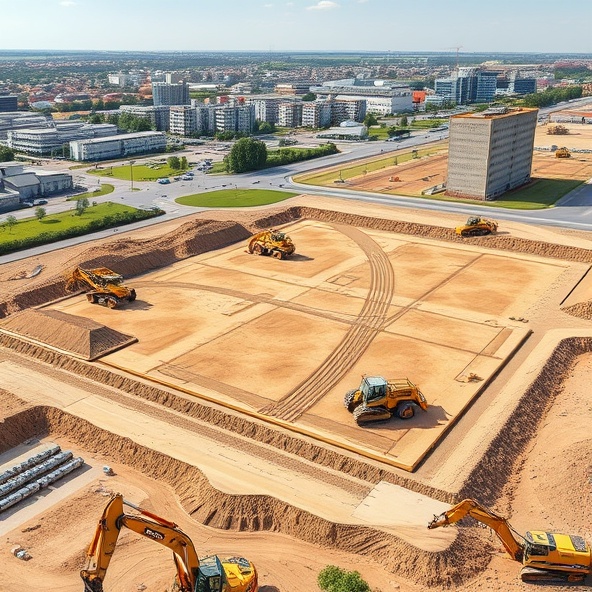Polish Agriculture and Industry: Exploring the Dynamics in Geography Exam
The Dynamics of Polish Agriculture and Industry: A Comprehensive Exploration in Geography Exam
I. Introduction
Polish agriculture and industry play vital roles in the country’s economy, contributing to its overall development and growth. In this geography exam, we will delve into the dynamics of these sectors, exploring their interdependencies, challenges, and opportunities.
II. Agriculture in Poland
A. Overview of Polish Agriculture
Polish agriculture has a long history, with farming practices dating back centuries. Today, it is a significant sector that contributes to both food security and economic stability. Poland’s geographical diversity, fertile soil, and favorable climate make it an ideal location for agricultural activities.
B. Main Crops and Livestock
Poland is known for its diverse agricultural production, including grains such as wheat, barley, and oats, as well as fruits, vegetables, sugar beets, and rapeseed. Livestock farming also plays a crucial role, with Poland being one of the largest producers of poultry, pork, and dairy products in Europe.
C. Challenges in Polish Agriculture
While Polish agriculture has experienced significant growth in recent years, it still faces various challenges. These include limited access to modern farming techniques and technologies, an aging farming population, and the effects of climate change. Additionally, the sector is susceptible to price fluctuations and market volatility.
D. Opportunities for Growth
Despite the challenges, there are several opportunities for the growth and development of Polish agriculture. Investing in sustainable farming practices, improving infrastructure, and promoting innovation through research and development can enhance productivity and competitiveness. Furthermore, exploring export markets and diversifying agricultural products can help strengthen the sector’s global presence.
III. Industry in Poland
A. Overview of Polish Industry
Polish industry has undergone significant transformation since the country’s transition to a market economy. Today, it is a diverse sector that encompasses various industries, including manufacturing, mining, energy, and construction. The industry plays a crucial role in job creation and attracting foreign direct investment.
B. Key Industries in Poland
Poland’s key industries include automotive manufacturing, electronics, machinery, chemicals, food processing, and information technology. The country’s strategic location in Central Europe, well-developed infrastructure, skilled workforce, and favorable business environment make it an attractive destination for industrial investments.
C. Environmental Impact
Like any other developed industry, Polish industry also faces environmental challenges. Pollution and emissions from manufacturing processes can have adverse effects on air and water quality. However, the government and industry stakeholders are actively promoting sustainable practices and implementing regulations to minimize environmental impact.
D. Growth Potential
Polish industry has significant growth potential, driven by technological advancements, innovation, and increased competitiveness. Investing in research and development, fostering entrepreneurship, and enhancing vocational education and training can further fuel the growth of the sector. Moreover, leveraging Poland’s membership in the European Union and its access to a large market offers additional opportunities for industrial expansion.
IV. Conclusion
In conclusion, Polish agriculture and industry are dynamic sectors that contribute to the country’s economic development. While agriculture faces challenges such as limited access to modern farming techniques and climate change, industry undergoes transformation while dealing with environmental impact. Nevertheless, both sectors have immense growth potential, and with strategic investments and sustainable practices, Polish agriculture and industry can continue to thrive, driving the country’s overall progress.
Pytania i odpowiedzi
Jakie są główne sektory polskiego przemysłu?
Najważniejsze sektory polskiego przemysłu to: przemysł samochodowy, elektronika, metalurgia, chemia, spożywczy i meblarski.
Jakie są najważniejsze obszary uprawy roślin w Polsce?
Najważniejsze obszary uprawy roślin w Polsce to: zachodnia Małopolska, Dolny Śląsk, Wielkopolska, Mazowsze, Pomorze, Podkarpacie i Lubelszczyzna.
Jak duże znaczenie ma rolnictwo w polskiej gospodarce?
Rolnictwo ma duże znaczenie w polskiej gospodarce, stanowiąc ważny sektor zatrudnienia oraz przyczyniając się do bilansu handlowego kraju.
Jakie są najważniejsze produkty rolne w Polsce?
Najważniejsze produkty rolne w Polsce to: zboża (głównie pszenica i jęczmień), ziemniaki, buraki cukrowe, owoce, warzywa, trzoda chlewna i drób.
Gdzie znajdują się główne ośrodki przemysłowe w Polsce?
Główne ośrodki przemysłowe w Polsce to: Śląsk, Mazowsze, Wielkopolska, Dolny Śląsk, Pomorze oraz Świętokrzyskie.
Jakie są różnice między przemysłem ciężkim a lekkim?
Przemysł ciężki stanowi produkcję dóbr i materiałów o dużej wadze, takich jak stal czy cement, natomiast przemysł lekki produkuje towary o mniejszej wadze, na przykład odzież czy elektronikę.
Jakie są korzyści z rozwoju sektora rolnego w Polsce?
Rozwój sektora rolnego w Polsce przyczynia się do wzrostu zatrudnienia, zwiększenia produkcji żywności oraz poprawy bilansu handlowego poprzez eksport produktów rolno-spożywczych.
Jakie czynniki wpływają na lokalizację przemysłu w Polsce?
Lokalizację przemysłu w Polsce wpływają czynniki takie jak dostęp do surowców, infrastruktura transportowa, dostęp do rynku zbytu, dostęp do siły roboczej oraz wspomagające działania krajowe i lokalne programy rozwojowe.
Jakie są wyzwania dla polskiego sektora rolnego?
Wyzwania dla polskiego sektora rolnego to m.in. rosnące koszty produkcji, zmieniające się warunki rynkowe (w tym konkurencja zagraniczna) oraz dostosowanie się do wymagań unijnych w zakresie ochrony środowiska.
Jakie są perspektywy rozwoju polskiego sektora rolnego?
Perspektywy rozwoju polskiego sektora rolnego obejmują modernizację i technologiczne ulepszenie produkcji rolniczej, zwiększenie efektywności i konkurencyjności, a także rozwój rolnictwa ekologicznego i produkcji wysokojakościowych produktów.

